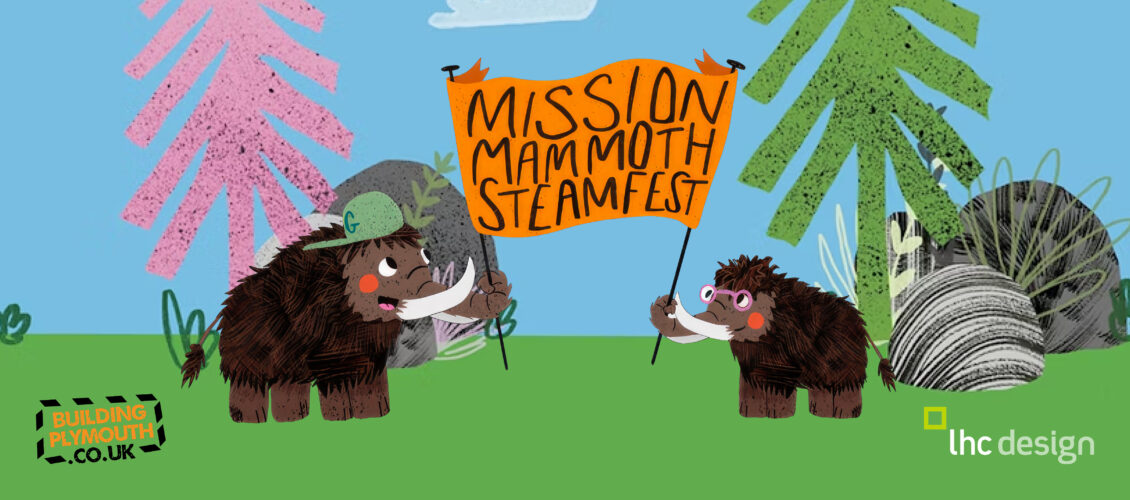Our team had an incredible experience at Mission Mammoth STEAMfest;
We felt privileged to support and inspire local school children through this playful and thought-provoking initiative.
It was hosted at The Box and Arts University Plymouth, in partnership with Building Plymouth.
During this event, the youngsters were introduced to the vast spectrum of professions in the construction and built environment, going beyond familiar builders and architects. It was truly remarkable to witness their enthusiasm as they discovered various roles collaborating to complete a project, including design, architecture, green skills and sustainability, engineering, and surveying.
To delve deeper into our learnings from this exceptional event, we caught up with our team to speak about what stood out as the most interesting aspect and the captivating “outside the box” thinking we encountered!
What did you learn from Mission Mammoth SteamFest?
Dafyn – What surprised me most of all was the level of understanding and enthusiasm the students had for issues surrounding the climate crisis and the resulting consequences we face. When quizzed at the beginning of each session, so many children were eager to share their knowledge on the subject matter, understanding the importance of tackling these issues. This enthusiasm was unwavering, especially when introduced to our selection of natural and organic material samples. Top learn that sustainable building materials lay all around them, even in their home city, clearly inspired them to think big and think green. It is evident that events like these have great potential to inspire the next generation of sustainability champions in the construction industry.
Simon – It reinforced the importance of studio ethics and collaboration, working and talking through ideas as a team and helping one another with your ideas.
Lizzie – The importance of allowing children freedom to explore ideas. It was also saddening to see that some children had no idea how to design or think of possibilities within an open brief, having not had the opportunity to do so within school. Many were very concerned about ‘doing it wrong’ and struggled to get started. Once they got going, nearly all the children had an exciting idea.
Ethan – Throughout the day many of the school pupils demonstrated a deep interest in the STEAM working environment but struggled to understand pathways into the industry.
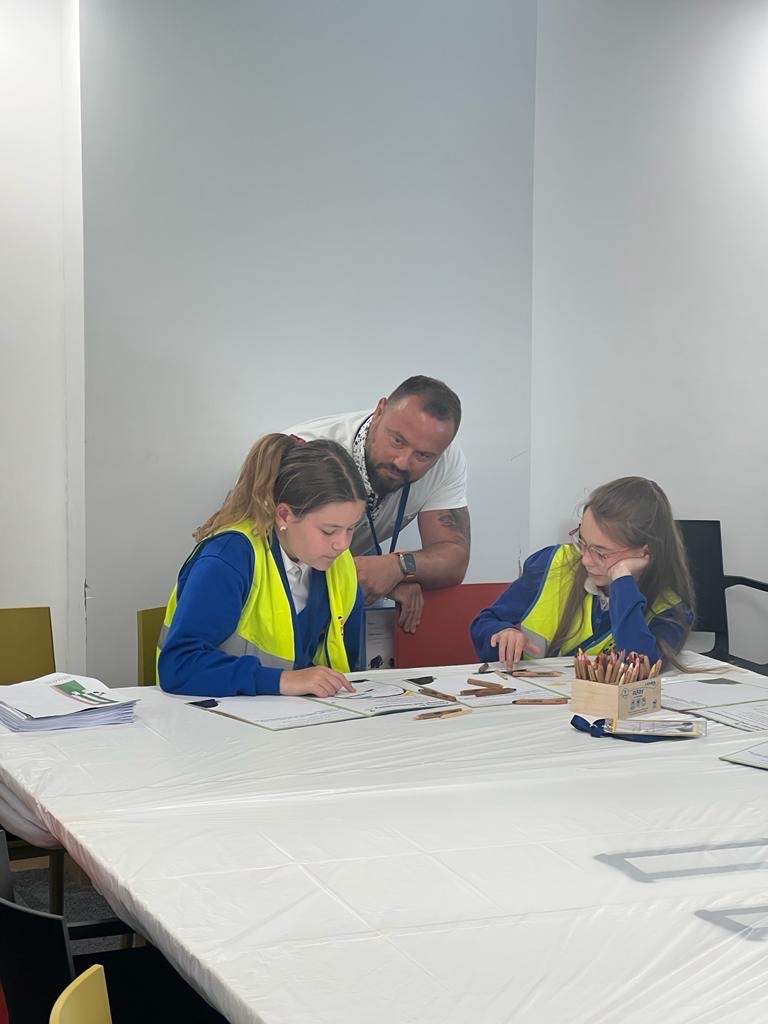
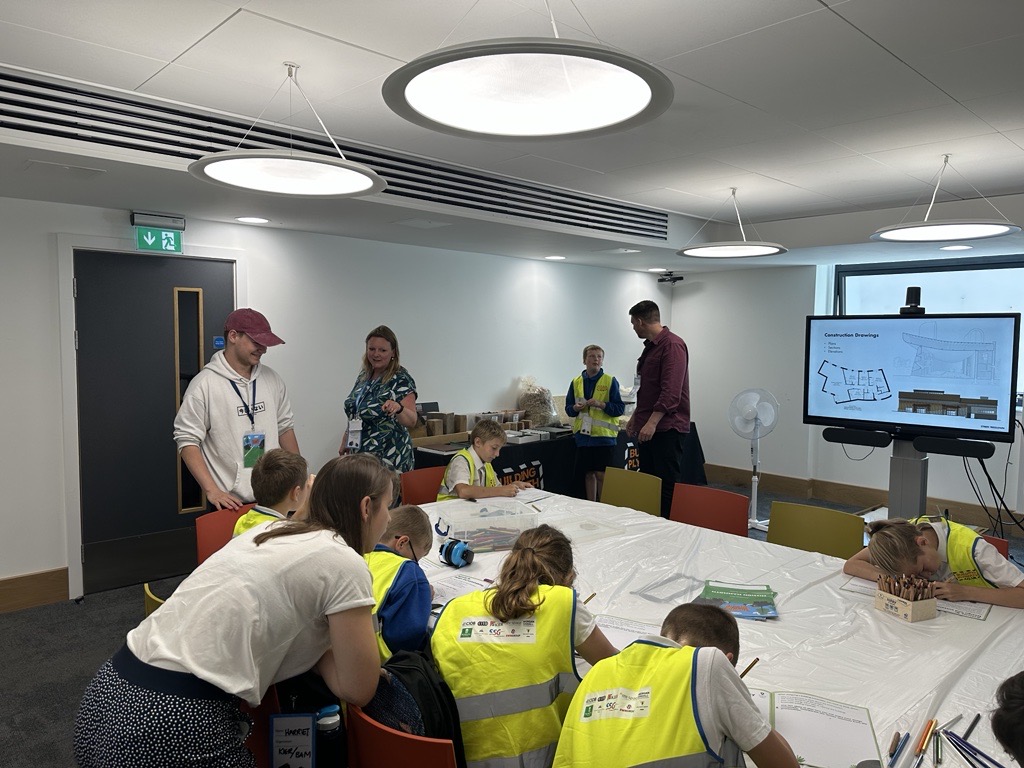
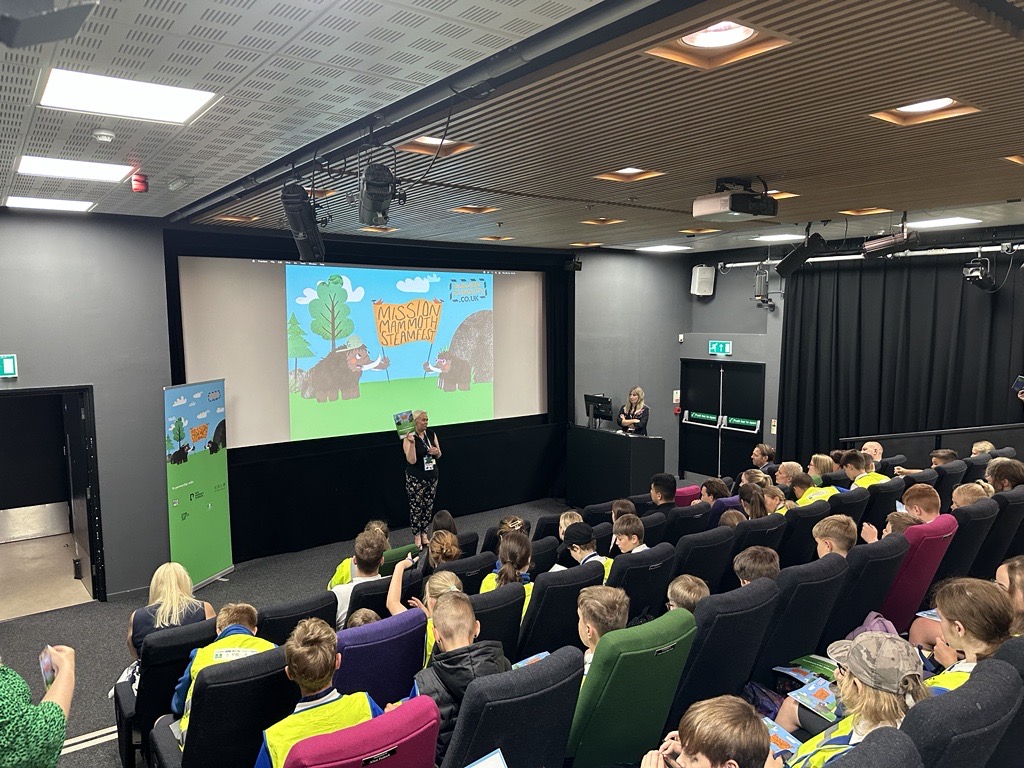
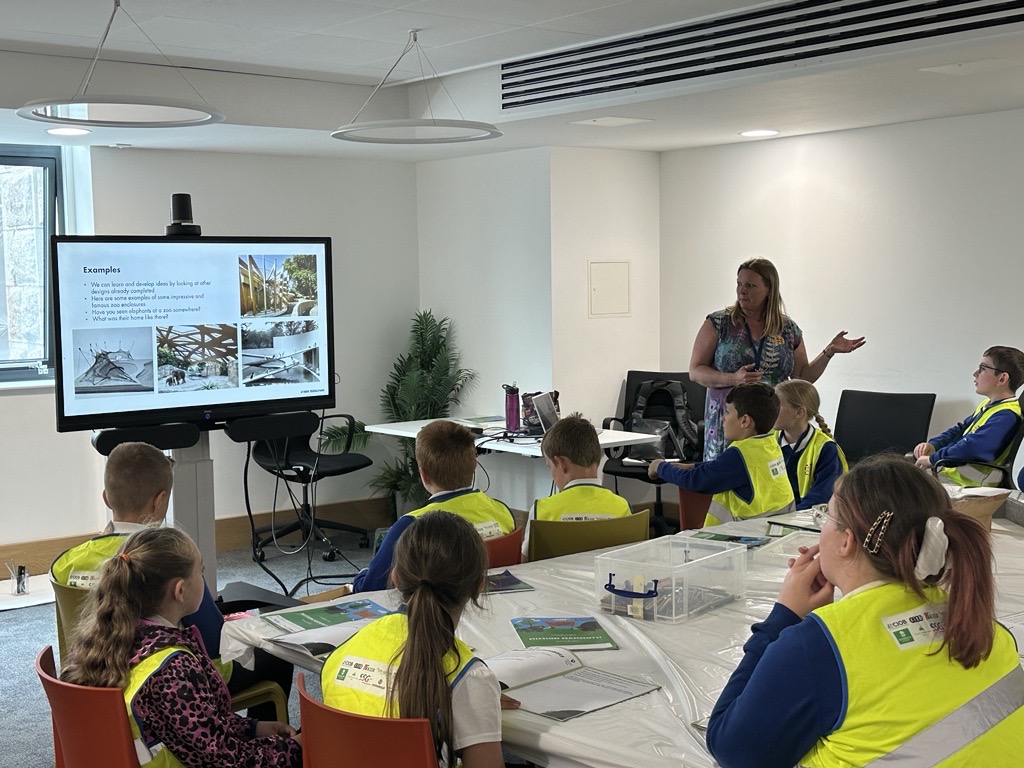
What aspects of the day stood out for you?
Dafyn – Most interesting to me was working with the last group of the day. Having rotated around all the other workshops, it was great to see them piecing together all the information they had gathered from all the disciplines. Attempting to balance cost, carbon, and efficiency alongside their own imaginations, it was interesting to see the students developing a critical mindset and compromising on design decisions in order to better the sustainability of their proposals.
Simon – Having a large number of children in one room can be daunting at times. Not throughout Mission Mammoth. Watching the children spark with innovative ideas and concepts, with huge amounts of excitement and enthusiasm was an absolute pleasure.
Lizzie – Hearing the way other construction professionals described what they do in an engaging and child friendly way. It was enjoyable to see the children get excited about the different elements of the day and share ideas between themselves. Some of the children were great at generating creative ideas, others had a more precise and technical approach, whilst others were inspired by the material samples and how the building would feel. The event provided activities which catered to a variety of interests and skills and hopefully opened the children’s minds to the huge variety of roles available to them within the construction industry.
Ethan – I found it interesting how well it was planned as an event, even though the tasks were varied it still followed a solid structure EG: Starting at Understanding the mammoth going all the way to building it an environment to live in.
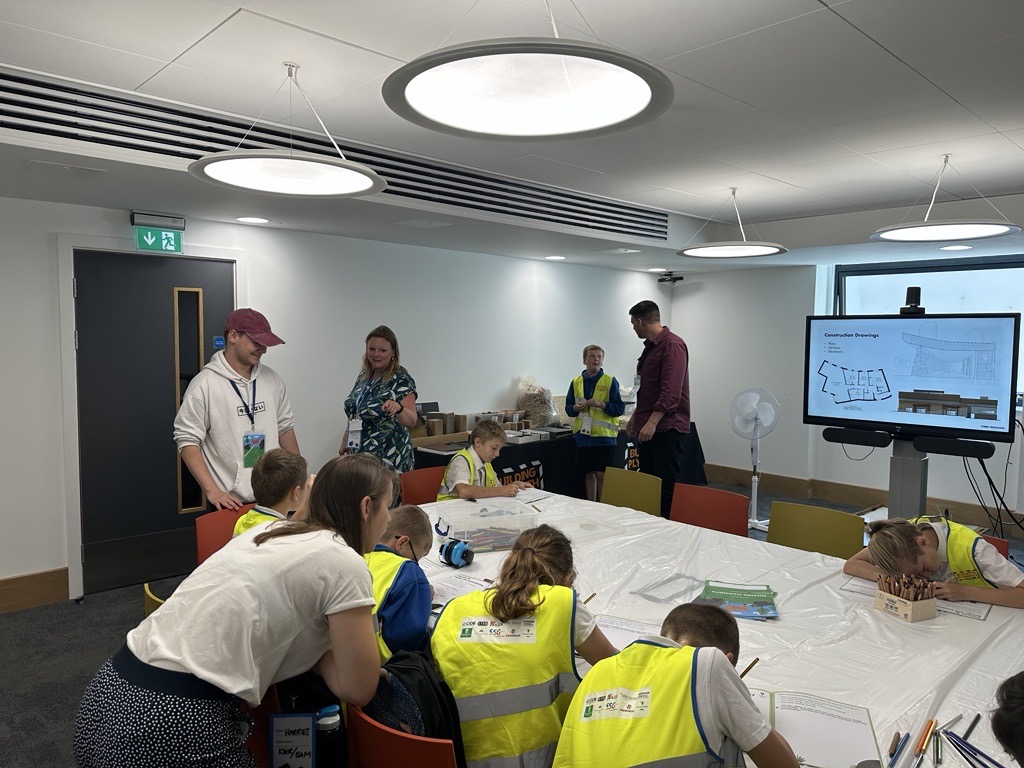
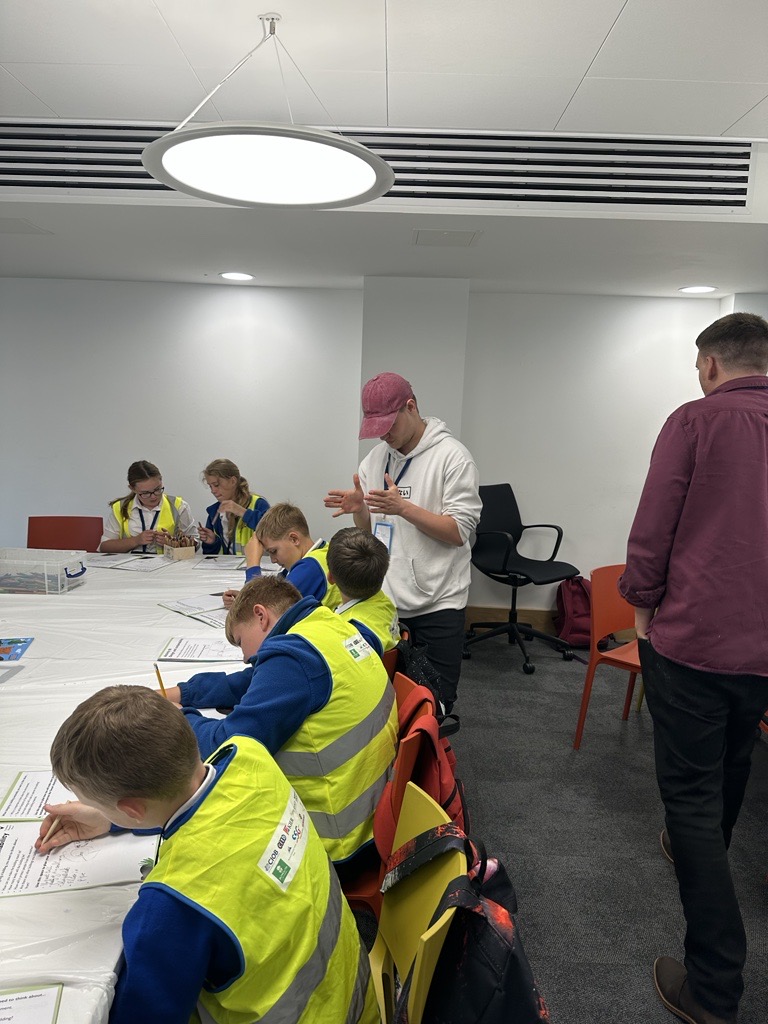
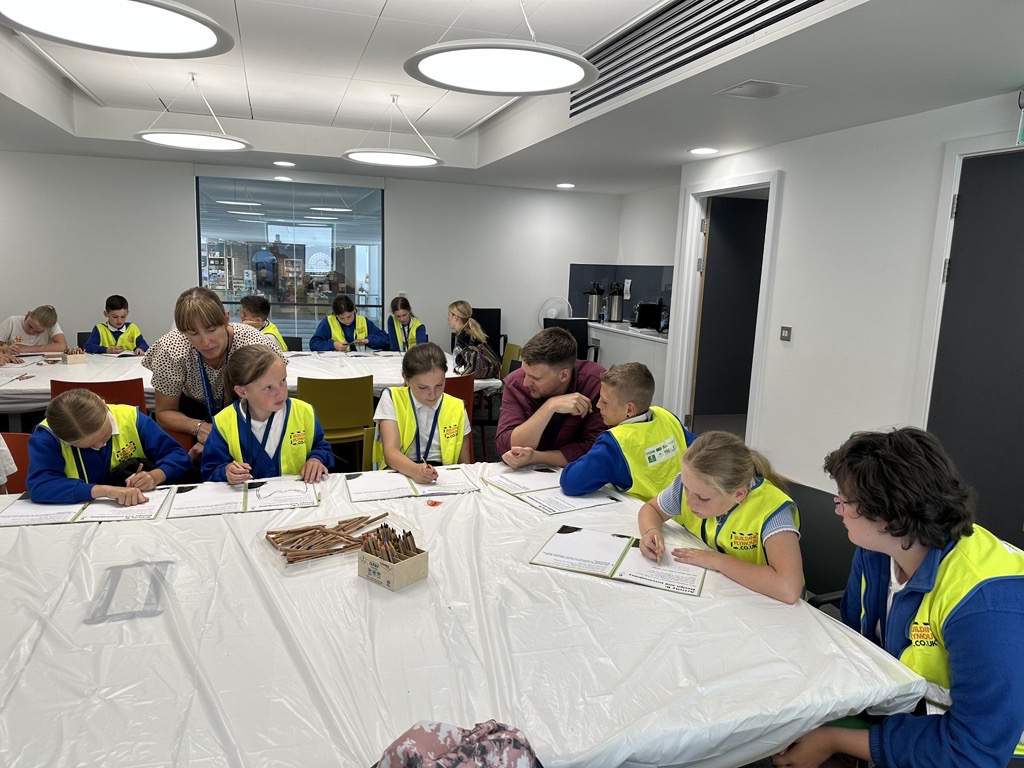
What was the most interesting “outside-the-box” thinking you encountered?
Dafyn – Due to the amount of food, two mammoths would need to consume to sustain themselves, one student was concerned with the amount of water needed to flush away all of the unwanted by-products. To tackle this sustainably, the student implemented a grey water harvesting system to collect rainwater that could supply the mammoth’s sanitary needs!
Simon – I was struck by one child’s idea of creating a Mammoth House in space on the edge of the earth’s orbit. Thus, creating a new dimension to the whole concept!
Lizzie – It was great to see the children considering the mammoth’s needs in terms of internal and external environment. Several designed in snow machines (powered by renewable energy!), green walls and floors and some interesting options for capturing wind to ensure the mammoths stay cool. The most unusual feature I saw was what can only be described as an elaborate flume system – not for the mammoths but for their excreta!
Ethan – One of the year 6 students made a particular impact by using knowledge of thermal detecting diodes. They wanted to manage temperature change to ensure that water pipes did not freeze in the cold environment of the enclosure.

